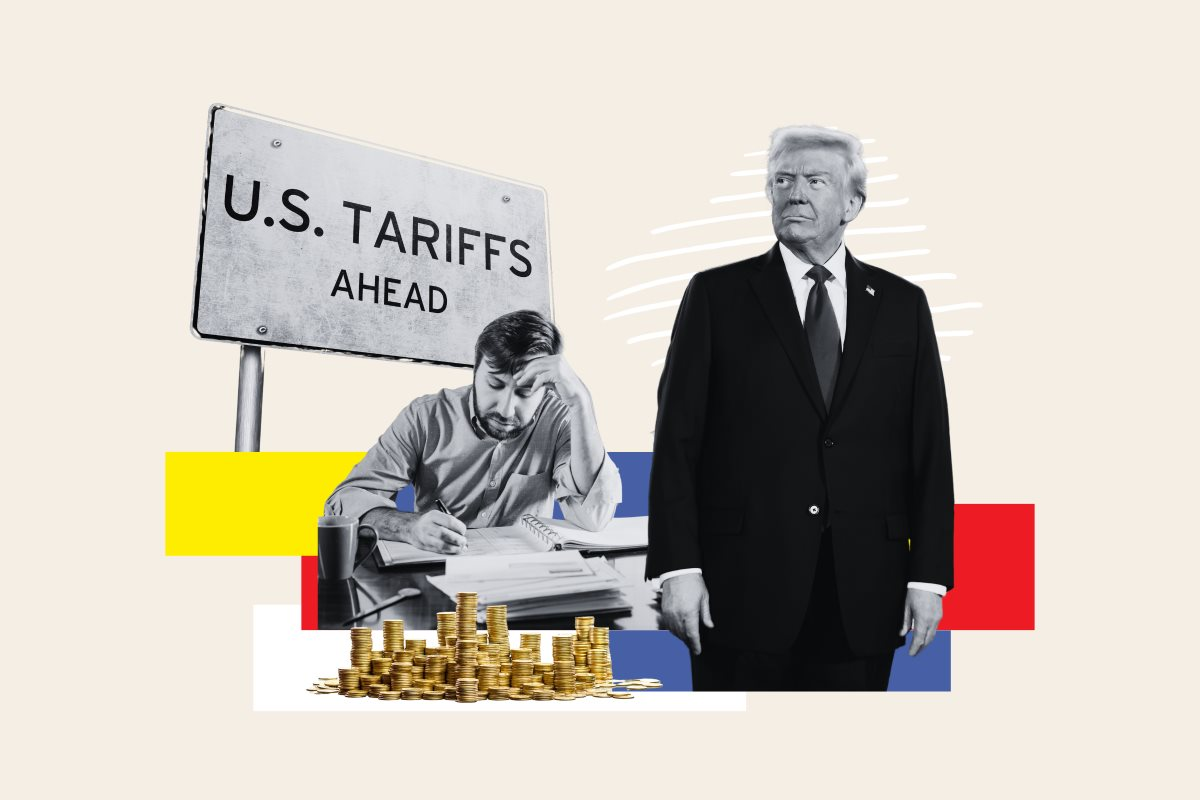Trump's Tariffs: CEO Concerns And Consumer Impact

Table of Contents
CEO Concerns and Business Strategies in Response to Trump's Tariffs
The imposition of tariffs created a whirlwind of challenges for CEOs across numerous industries. Navigating this new economic landscape required swift adaptation and strategic decision-making.
Increased Production Costs and Reduced Profit Margins
Tariffs dramatically increased the cost of imported goods, a crucial component for many businesses. This directly squeezed profit margins, forcing CEOs to confront difficult choices. Industries heavily reliant on imported materials, such as manufacturing and agriculture, felt the brunt of this impact.
- Higher input costs leading to price increases: The increased cost of raw materials and components forced many businesses to raise prices, potentially impacting sales volume.
- Reduced competitiveness in the global market: American businesses faced increased competition from companies in countries not subject to the same tariffs.
- Shifting production overseas to avoid tariffs: Some companies relocated parts of their production to countries outside the tariff's reach, impacting domestic job creation.
- Increased investment in automation to offset labor costs: To mitigate rising costs, some businesses invested heavily in automation technologies to reduce their reliance on labor.
Supply Chain Disruptions and Uncertainty
Trump's tariffs created significant disruptions to already complex global supply chains. The intricate web of international trade became fraught with uncertainty, leading to unforeseen challenges for businesses.
- Delays in delivery times: Tariffs and associated inspections led to lengthy delays in getting goods to market.
- Increased inventory costs: Businesses needed to hold larger inventories to buffer against potential supply shortages.
- Difficulty in forecasting demand: The volatile nature of the trade environment made it exceedingly difficult to predict future demand.
- Increased reliance on domestic suppliers (with potential drawbacks): While some businesses shifted to domestic suppliers, this often meant accepting higher prices or potentially lower quality.
Strategic Responses from CEOs: Adapting to Tariff Volatility
Faced with this unprecedented situation, CEOs implemented a range of strategic responses to navigate the turbulent waters of tariff volatility.
- Lobbying efforts to influence trade policy: Many companies engaged in extensive lobbying efforts to advocate for changes to the tariff policies.
- Investment in domestic production and reshoring: Some companies invested in bringing manufacturing back to the US, aiming for increased control and reduced reliance on imported goods.
- Diversifying supply chains to reduce reliance on specific countries: To reduce vulnerability, many companies diversified their supply chains to include suppliers from multiple countries.
- Price adjustments to maintain profitability: Companies carefully adjusted prices to balance maintaining profitability with retaining market share.
The Impact of Trump's Tariffs on Consumers
While the initial aim of Trump's tariffs was to protect domestic industries, the impact on consumers was substantial and, for many, negative.
Higher Prices for Goods and Services
Tariffs translated directly into higher prices for consumers across a wide range of goods and services. Everyday items were affected, resulting in a decrease in consumer purchasing power.
- Reduced consumer purchasing power: Higher prices reduced the amount of disposable income consumers had available for spending.
- Inflationary pressures: The increase in prices contributed to inflationary pressures across the economy.
- Impact on low-income households disproportionately: The impact of higher prices was felt most severely by low-income households, who have less disposable income to absorb increased costs.
Reduced Choice and Availability of Goods
The imposition of tariffs also led to a reduction in the availability of certain imported goods. This impacted consumer choice and intensified competition within the affected markets.
- Increased scarcity of certain products: Some goods became scarce, leading to shortages and higher prices.
- Reduced quality due to limited options: Consumers had fewer choices, potentially resulting in a decline in overall quality.
- Potential for monopolies in certain sectors: With fewer imports, the potential for monopolies within specific market segments increased.
Long-Term Economic Consequences for Consumers
The long-term economic repercussions of Trump's tariffs continue to be debated. The impacts on job creation and loss, wages, and overall economic growth are complex and multifaceted.
- Potential for job losses in import-dependent industries: Industries relying heavily on imports faced potential job losses due to reduced production or business closures.
- Potential for job creation in domestic industries (with caveats): While some job creation occurred in domestic industries, the net effect on employment remains a subject of ongoing economic analysis.
- Overall impact on economic growth and consumer confidence: The tariffs' overall impact on economic growth and consumer confidence continues to be a subject of ongoing debate and analysis.
Conclusion: Understanding the Lasting Effects of Trump's Tariffs
Trump's tariffs presented a complex and multifaceted economic challenge. CEOs faced increased costs, supply chain disruptions, and significant uncertainty. Consumers experienced higher prices, reduced choices, and broader economic consequences. The intended benefits of protecting domestic industries were often outweighed by the unintended consequences for businesses and consumers alike. The complexities of trade policy and its far-reaching consequences highlight the need for careful consideration and comprehensive analysis. To further understand the lasting effects of these policies and the ongoing debate surrounding international trade, research the "Trump tariffs impact," "trade war consequences," and "economic effects of tariffs." This ongoing dialogue is crucial for shaping future trade policies and mitigating potential negative impacts on businesses and consumers.

Featured Posts
-
 How California Became The Worlds Fourth Largest Economy
Apr 26, 2025
How California Became The Worlds Fourth Largest Economy
Apr 26, 2025 -
 Sinners How Cinematography Showcases The Mississippi Deltas Expansive Landscape
Apr 26, 2025
Sinners How Cinematography Showcases The Mississippi Deltas Expansive Landscape
Apr 26, 2025 -
 Securing A Switch 2 Preorder The Game Stop Queue
Apr 26, 2025
Securing A Switch 2 Preorder The Game Stop Queue
Apr 26, 2025 -
 The Florida I Love A Cnn Anchors Travelogue
Apr 26, 2025
The Florida I Love A Cnn Anchors Travelogue
Apr 26, 2025 -
 The Karen Read Case A Year By Year Breakdown Of Legal Proceedings
Apr 26, 2025
The Karen Read Case A Year By Year Breakdown Of Legal Proceedings
Apr 26, 2025
